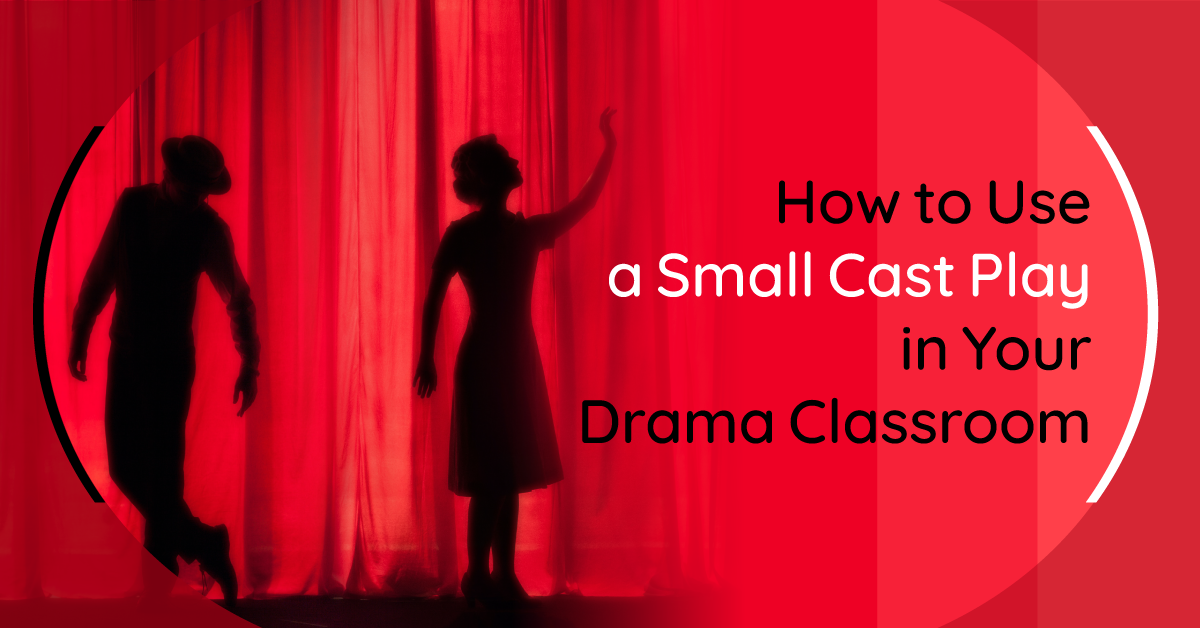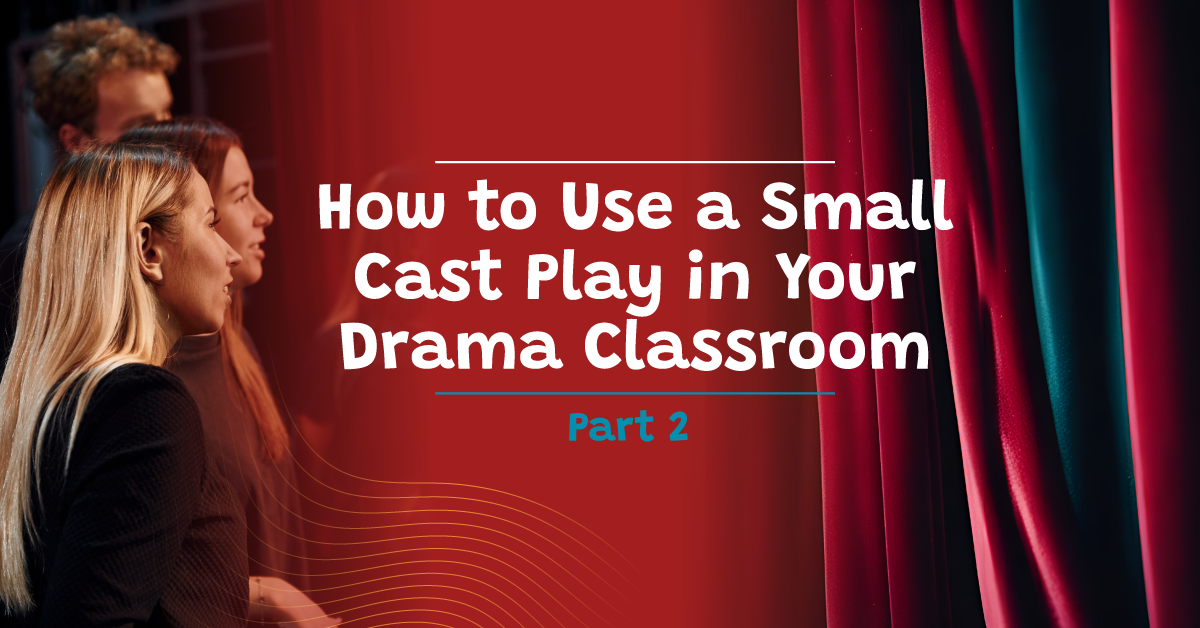How to Use a Small Cast Play in Your Drama Classroom
Many drama teachers look for large cast plays with huge ensembles so they can include every student who wants to participate. But sometimes you don’t need something that big. Maybe you have a new or fledgling drama program with only a few students. Maybe you’d like to feature your graduating seniors, or challenge your advanced acting students. Or maybe you just want something on a smaller scale. Whatever the reason, a small cast show is a necessity!
With a small cast show, you can get laser-focused. Because there are fewer characters, students must go deeper and really get to the heart and soul of the characters and their journeys.
Here are two analysis-based exercises focusing on small cast shows. These exercises can be done individually or in small groups. If you need some small cast scripts for your drama class library, Theatrefolk’s top 10 plays for small casts is a great place to start.
1. Small Cast Character Analysis
With many analysis assignments, students are challenged to choose one character from a large dramatis personae list, and do an analysis of that character. With a smaller cast show, have students do an analysis of each character, not only examining each character and their personalities and choices, but also looking deeper at how they relate to the others in the show, as well as their journey through the play as a whole.
Have students read through the play and create a character relationship map. Sketch or choose an image of each character and arrange them on a blank board or blank document. Identify the different kinds of relationships between the characters and use different coloured lines to connect the characters (red for love interest, green for friends, blue for relatives, etc.). Have students think of creative ways to indicate complicated relationships, such as “enemies to lovers” or “one-sided friendship.” Since the show is a small cast, each character should be connected to all the other characters in some way.
If you’re working on a vignette-style small cast play, the character relationships might not be as evident, because the characters might not interact with each other directly. In this case, they can still make a character relationship map, they just have to approach it a little differently. Have students look for threads that tie the characters together: How are they similar in terms of how they think, what they’re going through, how they approach a problem or challenge? There also might be subtle hints in the text that aren’t immediately evident; for example, perhaps two characters mention that they have the same math teacher, or one character might be the sister of another character’s friend. For each connection, have students write a small explanation of how the characters relate to one another.
2. Small Cast Producer’s Challenge
Ask your students why they think a theatre company might want to do a small cast show. Have students think like producers and brainstorm reasons having a small cast show could be advantageous. For example:
- Smaller cast generally means a smaller budget (and with producers, it always comes down to the bottom line of money)
- Fewer actors to pay
- Fewer costumes required
- Less rehearsal time needed (possibly)
- Often one unit set is all that’s needed
- A more intimate and focused story
- Plenty of stage time for each performer
Then brainstorm reasons why having a small cast could be challenging:
- Fewer roles to go around so fewer actors can be involved
- You could double cast the show so more actors could be involved but that would take more rehearsal time
- Could be more challenging to get audience members to come
- Fewer characters means more lines, which will take longer to memorize
Have students select a small cast show (or assign one for the entire class to focus on). Students will read the play and do a SWOT analysis illustrating the strengths, weaknesses, opportunities, and threats for the small cast show.
Next, have students create an estimated budget for the small cast show. It might help students to compare a small cast show budget to a large cast show budget. You might have them do an online search for production costs for theatrical productions. Broadway Tour has a great article breaking down how much it costs to put on a Broadway show — it definitely isn’t cheap, even if the show has a small cast!
Students will present their analysis and budget to the rest of the class. Make note of common ideas that come up and look deeper into unique ideas that other students may not have thought of.
Keep your eyes peeled for an upcoming article about acting and directing exercises for small cast shows!



